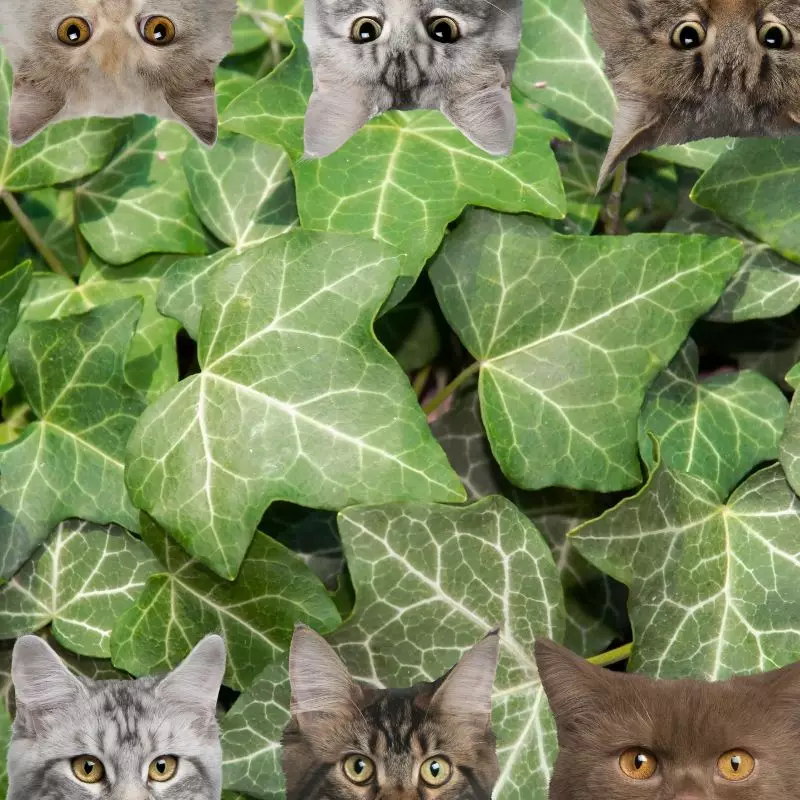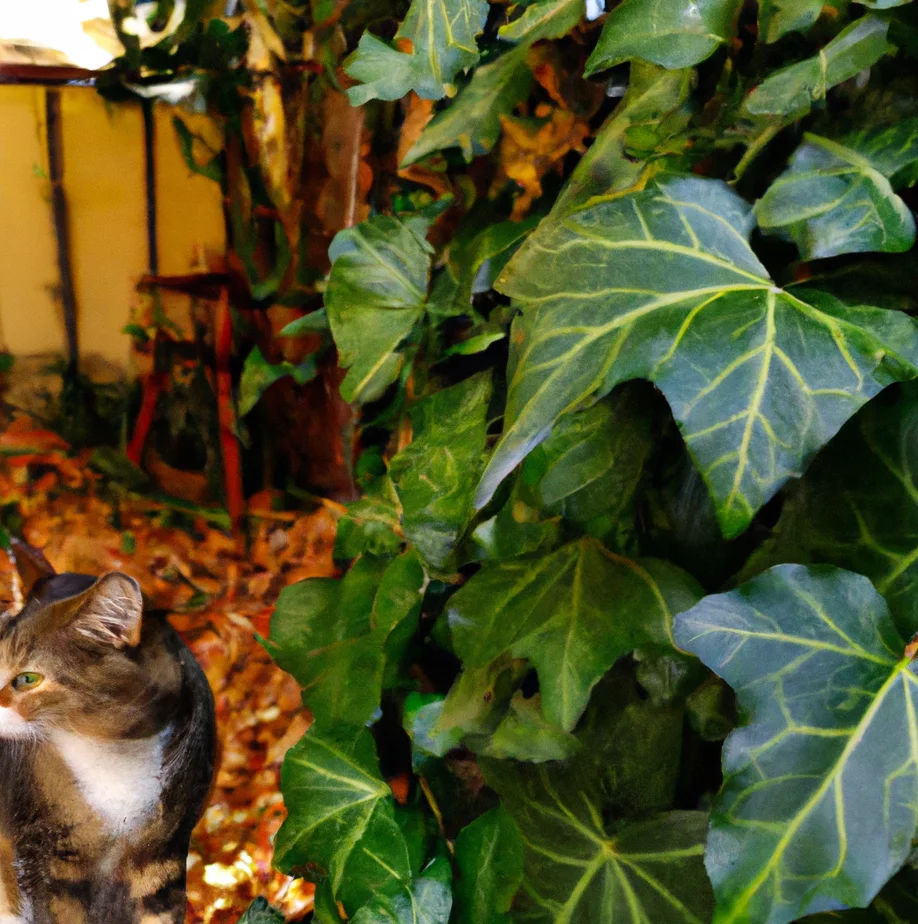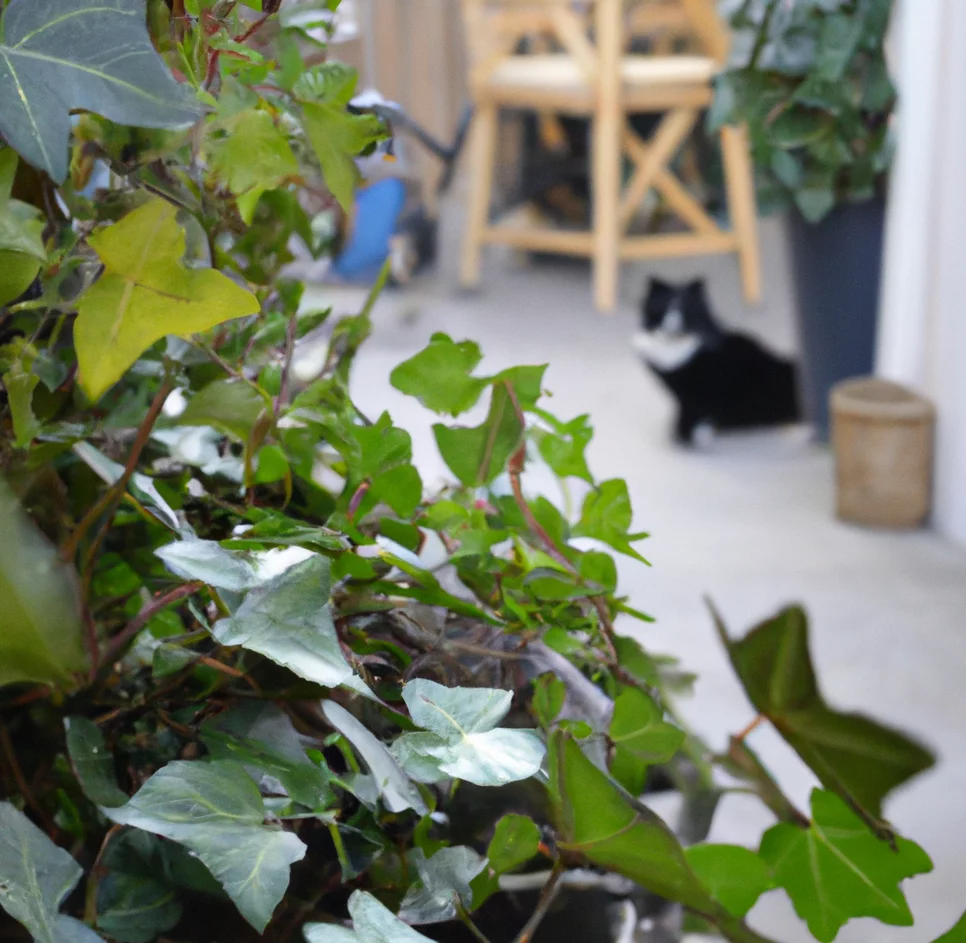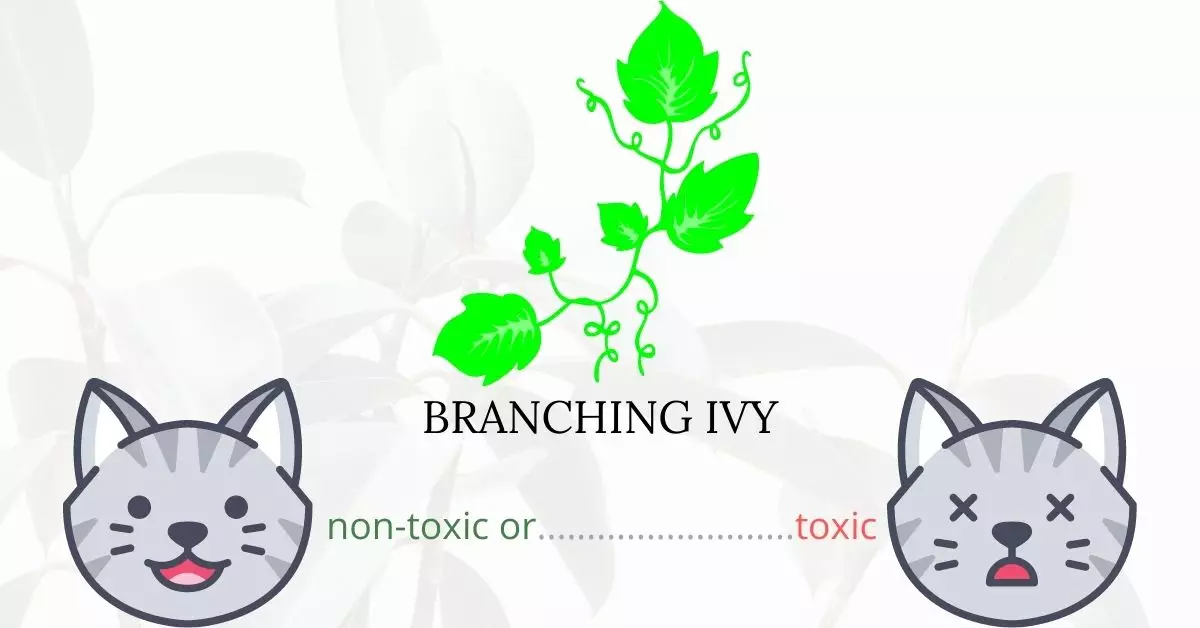Yes, Branching Ivy, also known as English Ivy, Glacier Ivy, Needlepoint Ivy, Sweetheart Ivy, and California Ivy, is toxic to cats.
Collaboratively written with a team of experienced DVMs (doctors of veterinary medicine), this article aims to provide accurate and up-to-date information regarding the risks associated with Branching Ivy and its effects on feline friends. In addition to our DVM collaborations, we have consulted high-authority websites such as ASPCA and PetMD to ensure comprehensive coverage on this topic.
Branching Ivy contains Triterpenoid saponins, which are harmful to cats. These saponins are hederagenins made up of various acids that produce a foaming reaction. When ingested by cats, they result in immediate, painful stinging and burning sensations in the mouth. The chemical compounds in these saponins directly affect both the digestive and respiratory mucous membranes.
Clinical Signs of Branching Ivy Poisoning in Cats

When a cat comes into contact with or consumes Branching Ivy, the subsequent reactions stem from the plant’s toxic components, particularly the Triterpenoid saponins. Each symptom can be linked to a specific type of interaction or exposure with the plant. Here’s a detailed breakdown of the clinical signs and their potential causes:
- Vomiting and Diarrhea: Caused by ingestion of the plant. The saponins irritate the gastrointestinal tract, leading to nausea and the body’s attempt to expel the toxin.
- Drooling Excessively: This happens when the cat chews on the plant. The immediate irritation in the mouth prompts increased salivation.
- Pawing at the Mouth: A direct result of the burning and stinging sensation caused by the saponins when the plant is chewed or ingested.
- Bloating: Gas accumulation due to the gastrointestinal disturbance from ingestion.
- Weakness: A systemic effect of the toxins on the cat’s body, resulting in lethargy or reduced energy.
- Sneezing: When a cat smells the ivy, the plant’s particles can irritate the nasal passages, leading to sneezing.
- Coordination Issues: A potential neurologic effect of the toxins leading to dizziness or imbalance.
- Hyperthermia: Elevated body temperature due to the body’s response to the toxins.
- Appetite Loss: A common reaction to gastrointestinal discomfort and systemic illness.
- Excessive Thirst: Resulting from dehydration due to vomiting or diarrhea.
- Dilated Pupils: A possible neurologic effect of the toxin’s impact on the brain’s visual center.
- Bradycardia or Slowed Heartbeat and Hypotension or Low Blood Pressure: Cardiovascular effects of the toxins affecting the heart’s rate and blood pressure regulation.
- Redness of the Skin, Itching, and Blisters: Caused by external contact with the plant’s juices. The saponins cause irritation and inflammation of the skin upon contact.
If you notice any of these symptoms in your cat after it has been near Branching Ivy, seek veterinary assistance immediately.
First Aid and Treatment of Branching Ivy Poisoning in Cats

The veterinarian will provide supportive care to relieve the symptoms that your cat is experiencing. Intravenous fluids may be needed to feed your cat as well as to help in removing toxins from the cat’s body. To eliminate any residual toxic substances in the stomach, the veterinarian may opt to use hydrogen peroxide to induce vomiting or perform gastric lavage to pump the stomach.
Toxins in the gastrointestinal tract can be absorbed and bound with activated charcoal, which can be given to the cat. Toxins can flow through the body without being digested because of the charcoal. Various medications may be also prescribed by the vet depending on the needs of your cat.
Recovery from Branching Ivy Poisoning in Cats

Branching Ivy poisoning has not been linked to any feline deaths. All symptoms should go away in a few days, but it still depends on how much plant the cat ate. Once the cat’s condition has stabilized, he or she will be allowed to return home. Once the cat has returned home, maintain a calm and comfortable atmosphere while he or she recovers.
Prevention of Branching Ivy Poisoning in Cats
Make sure there is no ivy in any of the planters within the house. Removing it from outside gardening may also be the safest line of action. Your cat’s risk of coming into contact with California ivy and other harmful plants in other people’s gardens will be minimized if you keep him or her indoors.
If you love plants but have cats at home, check out these lists:





